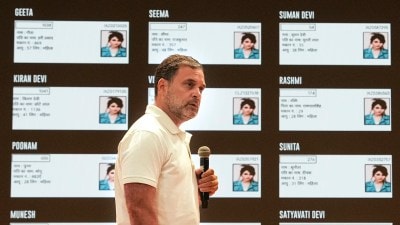Irrigation scheme gathers dust
The horticulture mission was cleared with much fanfare months ago but a micro-irrigation scheme, which complements the mission and provides ...

The horticulture mission was cleared with much fanfare months ago but a micro-irrigation scheme, which complements the mission and provides a huge 50 per cent subsidy to marginal farmers, is stuck with the Planning Commission since the last four months.
The scheme, is pending even though horticulture is one area in agriculture that the UPA government is keen on pushing as part of its efforts for a targetted four per cent growth in agriculture.
Micro-irrigation is used mainly in horticulture and for oilseeds also. But this scheme supplements the horticulture mission by pushing horticulture among small farmers who cannot afford the cost of micro irrigation facilities. The subsidy will work out to Rs 400 crore for one financial year, sources said.
The scheme, according to Planning Commission sources, is for farmers, owning land upto five hectares, and looks at bringing three lakh hectares in the country under micro-irrigation in the first year of its implementation. The scheme proposes that the Centre and the state would sponsor 50 per cent of the cost while the farmer would pay the remaining 50 per cent. Of the 50 per cent share, the Centre-state ratio is 80:20.
This scheme will provide the highest subsidy ever for a micro-irrigation project and the subsidy will go straight to the farmer.
Sources said that states and Union territories have been divided into three categories of A, B and C depending on the area of coverage under micro-irrigation. Subsidy amounts are slated to increase for states falling in category C, mainly hilly areas where micro-irrigation costs are very high. The amount of subsidy will depend upon the crop and the category, sources said.
For the first year the area coverage target is 1.8 lakh hectare of drip irrigation and 1.1 lakh hectare of sprinkler irrigation, sources said. The government is keen on promoting drip and sprinkler irrigation, where water use is much lower than normal irrigation.
Meanwhile, many states have already sent in their ‘‘action plans’’ for promoting horticulture in their states.
Pawar had announced during the launch of ‘‘the mission’’ that the aim was to increase the production of horticulture products to 300 million tonnes by the year 2011-12.



- 01
- 02
- 03
- 04
- 05




























